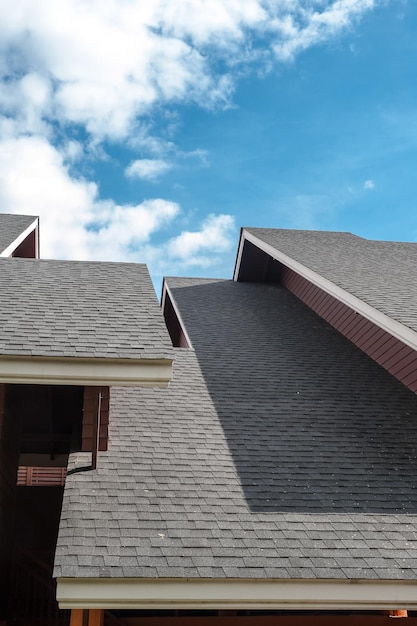What is the Pitch of a Roof?
by Admin

Roof pitch (also known as slope coefficient) measures the rise in relation to the span. It is important in deciding on the roofing material.
There are apps that make it easier to measure roof pitch.
Pitch is defined as the angle of a roofing surface
All roofs, no matter their shape or style, share a common element: pitch. Pitch is a measure of the slope in a roofing slope that determines what amount of material will be needed to cover the roof. Roof pitch can be determined using a level, or by using a calculator. Slopes that are more prominent indicate steeper roofs.
Roof pitches can be expressed in ratios. The roof pitch is the first number, which represents the roof run and rise.
Low-pitched rooftops with a pitch of less that 4:12 are dangerous to walk on, and may require special materials to ensure their safety. Conventional slope roofs, with a pitch of 4/12 to 9/12, are more cost-effective and easier to maintain. They also offer more space beneath their ridgeline.
It is the material that determines its use
Roof pitch is also called slope or slant. It determines what materials are allowed on roofs, and which roofing materials may be installed. It may seem like a small thing, but its impact on your home's durability over time can be profound. Most homes are between 4/12 and 8/12, with the lower numbers representing mild slopes whereas the higher numbers represent steeper slopes.
Pitch is often displayed as an integer with 12 as its numerator.
A good roofing contractor will first calculate the roof pitch, multiplying by its slope to account for the extra material required in construction. This ensures that their roof can withstand severe weather conditions and still provide optimal performance. Using the right pitch can also eliminate future issues such as leakage and mold.
This is a danger to your safety
If used incorrectly the pitch can pose serious safety risks, including eye irritation, respiratory problems, and burns. Petroleum-based pitches are flammable and can trigger asthma symptoms. Pine pitch may cause skin irritation and removal solvents can release toxic fumes.
It is vital that homeowners understand the limitations of roof materials before making repairs or changing shingles. Asphalt composite shingles cannot be installed on roofs below 12/12. Other materials can work, but they will require special techniques to avoid leaks.
As steep roofs can increase the risk of falling off, it's important to secure fall protection gear and shingle bundles in order to prevent potential slipperiness. In addition, it is important that there be a clear view to avoid obstacles that may block their vision such as chimneys or ridge vents.
It's a design element
Roof pitch has different meanings. Pitch is defined as a ratio derived by multiplying a roof's height by its span. A slope ratio is a ratio such as 4 inches (or 12 inches) of height for every 12 inches in span.
Roof pitch plays an important role in roofing design, affecting water penetration and drainage, as well material selection. A steeper pitch roof can handle the snowfall more effectively and provide more headroom than a shallower one. High-pitched, steeper roofs look better and are cheaper to build. However they can cost more. Most homes have moderately pitched roofs.
5R Roofing
Roof pitch (also known as slope coefficient) measures the rise in relation to the span. It is important in deciding on the roofing material. There are apps that make it easier to measure roof pitch. Pitch is defined as the angle of a roofing surface All roofs, no matter their shape or style, share a…
Recent Posts
- Understanding the Differences Between Sober Living Homes and Rehabilitation Centers
- The Benefits of Choosing Dentures as a Solution for Restoring Your Smile in Las Vegas
- Debunking Common Myths and Misconceptions About Dentures
- Understanding the Core Principles and Approaches of Integrative Medicine in Modern Healthcare
- Essential Tips for First-Time Home Buyers in Dallas, Texas
